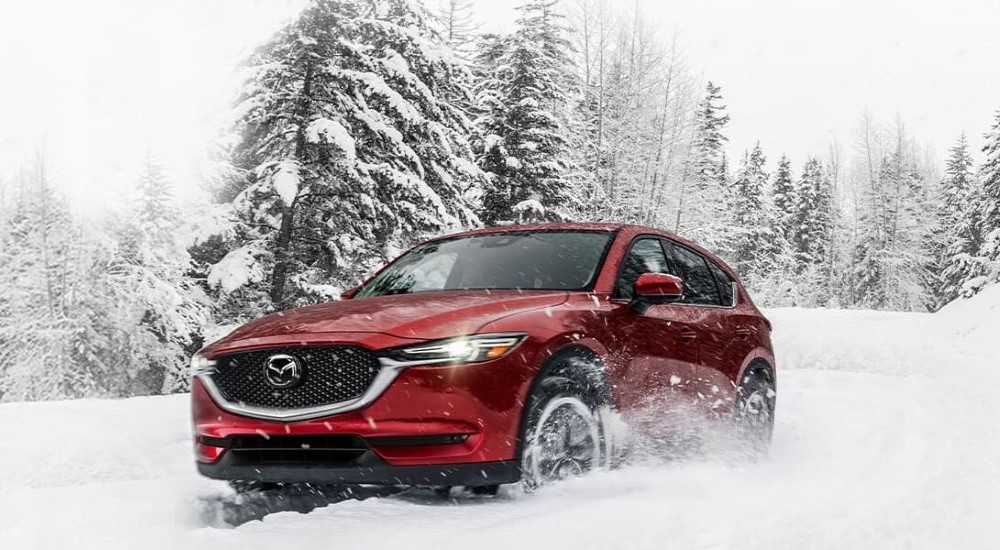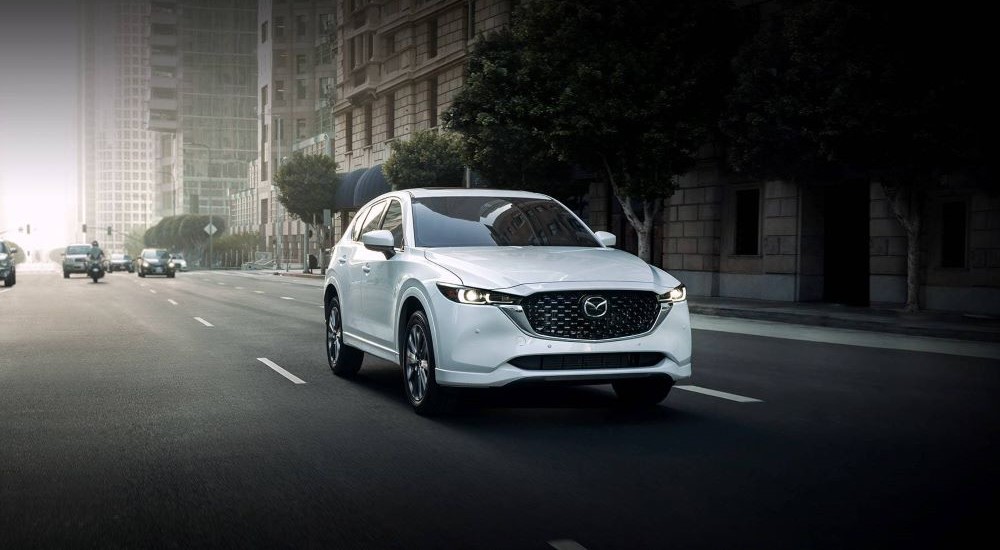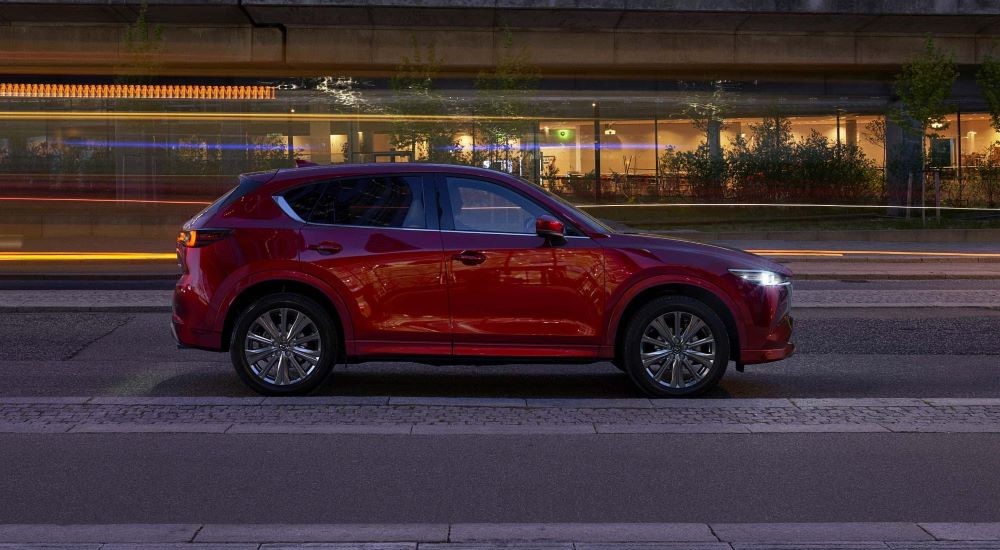If you’re on the hunt for a stylish, refined compact crossover that’s both affordable and fun to drive, it’s hard to do better than the Mazda CX-5. Known for its sophisticated design, potent acceleration, and luxurious features, this SUV has won rave reviews from drivers and critics alike since first hitting the market back in 2013. In fact, the CX-5 has been the brand’s best-selling vehicle every year since its debut, with Mazda moving over 3.5 million units since its release.
The automaker seems to have hit on a winning formula with the CX-5, giving drivers a well-rounded compact crossover that can go toe-to-toe with any other vehicle in its class. What makes the CX-5 so special, and why can’t drivers get enough of this alluring SUV? Before you head out to find a Mazda CX-5 for sale, read on as we see what makes the model such a strong entry in the ultra-competitive segment.
Changing the Game
In many ways, the CX-5 was something of a trendsetter. Once upon a time, the SUV segment was defined by large, boxy vehicles built in the same body-on-frame construction style as pickup trucks. These early SUVs of the 1980s carved out a niche amongst the outdoorsy, off-road set, giving drivers a new type of vehicle that embodied a rugged “go anywhere” ethos. The segment continued to grow throughout the 1990s and early 2000s, with the SUV steadily supplanting minivans and station wagons as the go-to choice for growing families.
With this change in purpose came a change in construction, with SUVs opting for the unibody approach used in most passenger cars. Offering improved handling, lower weight, and enhanced safety compared to their body-on-frame forerunners, this new class of crossover SUV has dramatically impacted the industry over the last few decades and now accounts for 45 percent of all light vehicles sold in America.
What does the rise of the crossover class have to do with the design of the CX-5? Despite embracing the new unibody construction technique, the crossover class was still firmly stuck in the 1990s from a design perspective. Crossover SUVs were generally smaller than body-on-frame offerings but still embraced the same boxy, squared-off design that had defined the SUV segment through much of the previous two decades. One doesn’t have to go far for an example of this trend: just look at the CX-5’s predecessor, the Mazda Tribute.
There’s nothing wrong with the Tribute, per se, but it was very much a product of its time, with a rectangular, utilitarian design that made the compact look just as much like a home appliance as it does an SUV. The design was par for the course at the time, which in retrospect, can be characterized as the SUV segment’s awkward teenage years. The class was growing faster than it could keep up with, fumbling for an identity, but that would change with the introduction of the CX-5 in 2012.
The Soul of Motion
When the CX-5 went on sale in early 2013, it not only introduced the public to Mazda’s new CX naming convention for its crossover models but added a new word to the automotive design lexicon: Kodo. The Japanese word literally translates to “heartbeat,” but in the context of Mazda’s automotive design approach, it is written with the characters for “Soul of Motion.” Kodo design is all about instilling objects with a sense of life––a soul––imparted by the master craftsmen who design and build the vehicles.
Mazda first employed the Kodo approach in 2010 with the Shinari concept, a strikingly aggressive sports sedan with a design inspired by an animal about to pounce. Long and lean with just a hint of its underlying muscle, the Shinari would pave the way for Mada’s next Kodo experiment. This would be the Minagi concept, a compact crossover that would eventually be released to the public as the CX-5.
The CX-5 carried the same subdued animalistic spirit as the Shinari, with flowing lines and curves highlighting the crossover’s sporty nature. The CX-5 couldn’t be more of a departure from the Tribute, ditching the right angles and boxy dimensions of the outgoing SUV and replacing them with a dynamic, flowing design inspired by nature. In fact, drivers will be hard-pressed to find a single 90-degree angle anywhere on the CX-5’s exterior. Designed with a mix of strong lines and rounded body panels that allow light to soften the overall form, the CX-5’s exterior almost serves as a visual metaphor for the SUV in general, with a hint of athletic performance hidden just below its serene surface.
The clean, naturally inspired approach continues in the interior, where drivers will find an elegant, minimalist cabin that injects a real sense of luxury into this affordable SUV. For Mazda designers, the interior presented a unique challenge: they wanted to create a meditative, calming space where a driver could feel relaxed, but not so relaxed that they failed to concentrate on the road ahead. “This called to mind the tearoom, where there is a comfortable harmony between relaxation and tension,” says Shinichi Isayama, chief designer at Mazda.
This tearoom-inspired approach can be seen throughout the interior, which carries an air of simplicity by removing all non-essential elements from the cabin. This design philosophy works a treat when it comes to the CX-5, creating, in Mazda’s words, “a sense of tension amid an air of comfort.” The interior is even more refined as you climb the CX-5’s trim ladder, with the top-tier Turbo Signature offering genuine layered wood trim and sumptuous Caturra Brown Nappa leather-trimmed seats.
SKYACTIV-G Performance
With the CX-5, Mazda has managed to achieve the impossible, or at least improbable: creating a fun, lively compact crossover while keeping the price tag below the all-important $30,000 mark. To be fair, this isn’t wholly unique within the segment as a number of brands offer high-end trims and equipment packages to beef up their run-of-the-mill base models, but the difference is that with the CX-5, Mazda isn’t nickel-and-diming drivers for the privilege of driving an enjoyable vehicle.
The 2023 CX-5 comes standard with a 2.5-liter SKYACTIV-G four-cylinder engine that puts out 187 hp and 186 lb-ft of torque. If you’re doubting the performance credentials of a sub-200 hp engine, just keep this little fact in mind: the CX-5 weighs in at just over 3,700 lbs. That modest poundage gives the CX-5 a power-to-weight ratio that’s tough to argue with, making this compact crossover a uniquely dynamic ride despite its four-cylinder setup. The engine is paired with a responsive six-speed automatic transmission that’s been tuned a little more aggressively than one might expect, providing brisk gear changes that really help drivers to get the most out of the SKYACTIV-G engine.
Mazda’s innovative SKYACTIV-G engine is known for its unbeatable efficiency, but it’s the car’s G-Vectoring Control (GVC) technology that really makes the CX-5 so much fun. The system uses engine timing to improve the SUV’s overall driving dynamics, reducing engine torque while turning in order to put more weight on the front tires. The GVC has a major impact on chassis control and stability, making for more accurate steering and an overall tighter, more responsive ride.
Jinba Ittai
But it’s not just the CX-5’s engine that makes for such an enjoyable ride. At least some of the credit has to do with the fact that the SUV comes standard with all-wheel drive. This setup goes a long way in upping the fun factor when it comes to CX-5, improving the crossover’s cornering and acceleration while giving it a distinctly sporty feel. On the safety side, AWD also has a major impact on traction, allowing the CX-5 to outshine many of its rivals when it comes to navigating inclement weather.
The crossover also boasts an electrically assisted steering system, tuned damping, and a well-engineered cabin that allows for minimal road noise. These features aren’t necessarily groundbreaking, but only if you’re talking about the luxury end of the SUV class. For a sub-$30,000 model, they’re something of a revelation and one that makes us wonder just where our money is going when it comes to some other compact crossovers.
If you want to get a feel for the CX-5 in its most athletic form, the Turbo and Turbo Premium trims make a strong case for splashing the cash. Ringing in at under $40,000, these two high-end trims might be a little more expensive than the rest of the lineup, but it’s a small price to pay for the addition of the turbocharged engine. The 2.5-liter SKYACTIV-G engine with a Dynamic Pressure Turbo puts the CX-5 well over the 200 hp mark, giving drivers as much as 256 hp to play with if they’re willing to invest in some premium gas.
Combine those numbers with 320 lb-ft of torque, and you have a distinctly sporty version of the CX-5 that’s ready to sprint from zero to 60 mph in as little as 6.2 seconds. The turbocharged engine is well-paired with the six-speed automatic, boasting minimal lag and allowing the CX-5 to slalom by other vehicles at highway speed with minimal effort. The upgraded engine makes the Turbo and Turbo Signature trims an enticing option, but it’s nice to know that, even in its base-engine guise, the CX-5 is sure to give drivers a rush.
An Understated Approach
With the CX-5, Mazda has done what many critics thought was impossible, creating a fun, dynamic, and stylish SUV that is well within the budget of the average driver. While some automakers have a tendency to cram their cabins with every gadget under the sun, the CX-5’s understated approach––inspired by Mazda’s Kodo design philosophy––results in a distinctly different interior that provides a sense of elegant harmony without skimping on any of the advanced features drivers have come to expect from the modern SUV.
The CX-5’s interior is just as noteworthy, reliably turning heads and inspiring a new wave of sleek, sporty crossovers. This model is just as groundbreaking from a performance perspective, with Maza squeezing some impressive numbers out of the four-cylinder SKYACTIV-G engine, and it is even more charming in its turbocharged form. The inclusion of technology like G-Vectoring Control gives drivers the opportunity to turn every drive into a hair-raising experience. With such an impressive reputation from both the design and performance perspective, it’s little surprise that the CX-5 has become Mazda’s best-selling model.






